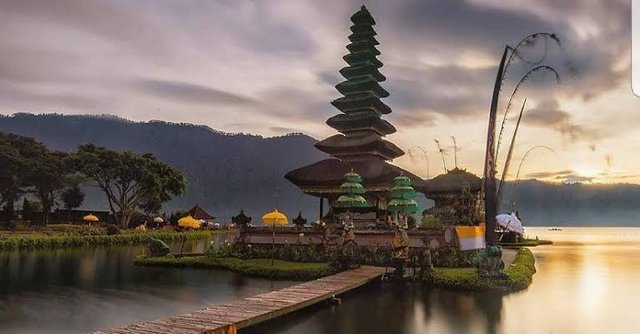Bali, Island of a thousand temples

Bali: The Island of a Thousand Temples
Bali, often referred to as "The Island of a Thousand Temples," is one of Indonesia's most iconic destinations. This picturesque island, located in the central part of the Indonesian archipelago, is renowned for its stunning beaches, vibrant culture, and spiritual heritage. The nickname "Island of a Thousand Temples" aptly describes Bali's landscape, dotted with countless temples and shrines that reflect the island's deep-rooted Hindu traditions.
A Spiritual Haven
The predominant religion in Bali is Hinduism, which significantly influences the island's culture and daily life. Unlike the rest of Indonesia, which is primarily Muslim, Bali's Hindu heritage is unique and deeply cherished. Temples, known locally as "pura," are central to Balinese culture and community life. Every village has at least three temples: the Pura Puseh (temple of origin), Pura Desa (village temple), and Pura Dalem (temple of the dead). Additionally, there are numerous family shrines and large, significant temples that draw worshippers and tourists alike.
The Most Famous Temples
Among the myriad of temples in Bali, some stand out for their historical significance, architectural beauty, and cultural importance.
Pura Besakih: Known as the "Mother Temple," Pura Besakih is the largest and holiest temple in Bali. Located on the slopes of Mount Agung, it comprises over 80 individual temples and is a site for numerous important religious ceremonies.
Tanah Lot: This iconic sea temple is perched on a rocky outcrop and is famous for its stunning ocean views, especially at sunset. Tanah Lot is dedicated to the sea gods and is one of the most photographed spots in Bali.
Ulun Danu Bratan: Situated on the shores of Lake Bratan, this picturesque temple is dedicated to the lake goddess, Dewi Danu. It appears to float on the water, creating a mesmerizing sight that attracts many visitors.
Goa Gajah: Also known as the "Elephant Cave," this archaeological site near Ubud features a cave with intricate carvings, a holy bathing area, and several relics dating back to the 11th century.
Cultural Significance
Temples in Bali are not just places of worship but also serve as venues for various cultural and religious events. Ceremonies, festivals, and rituals are integral parts of Balinese life, with temples being the focal points for these activities. The famous Kecak dance, for example, is often performed in temple courtyards, offering a glimpse into the island's rich cultural tapestry.
A Tourist Attraction
The allure of Bali's temples extends beyond the spiritual realm. Tourists flock to these sacred sites to admire their architectural grandeur, learn about Balinese culture, and participate in traditional ceremonies. The intricate designs, serene surroundings, and spiritual ambiance of the temples provide a unique and enriching experience for visitors from around the world.
Preservation and Respect
While Bali welcomes tourists to its temples, it is crucial to remember that these sites are sacred and hold immense cultural and religious significance. Visitors are encouraged to dress modestly, follow local customs, and show respect for the sanctity of the temples. Preservation efforts are ongoing to maintain the integrity and beauty of these historical structures, ensuring they remain a testament to Bali's rich heritage.
In conclusion, Bali's moniker as "The Island of a Thousand Temples" is a testament to the island's profound spiritual legacy and its enduring cultural heritage. The temples of Bali are not just architectural marvels but also living embodiments of the island's religious and cultural identity. Whether for spiritual solace, cultural enrichment, or sheer admiration of their beauty, Bali's temples continue to captivate and inspire all who visit.